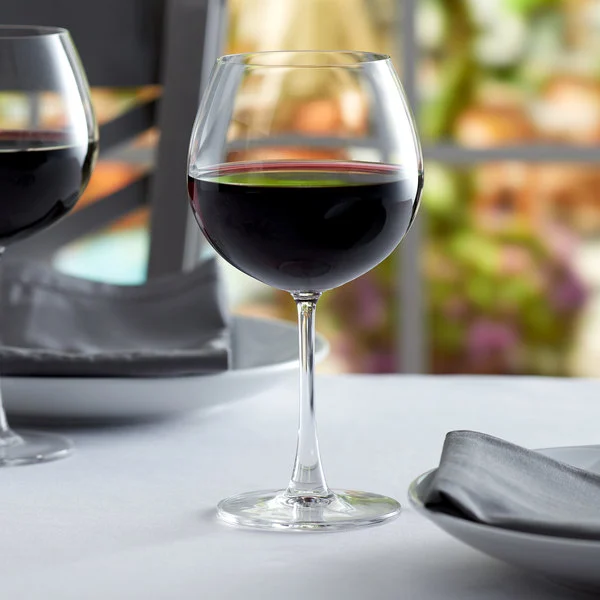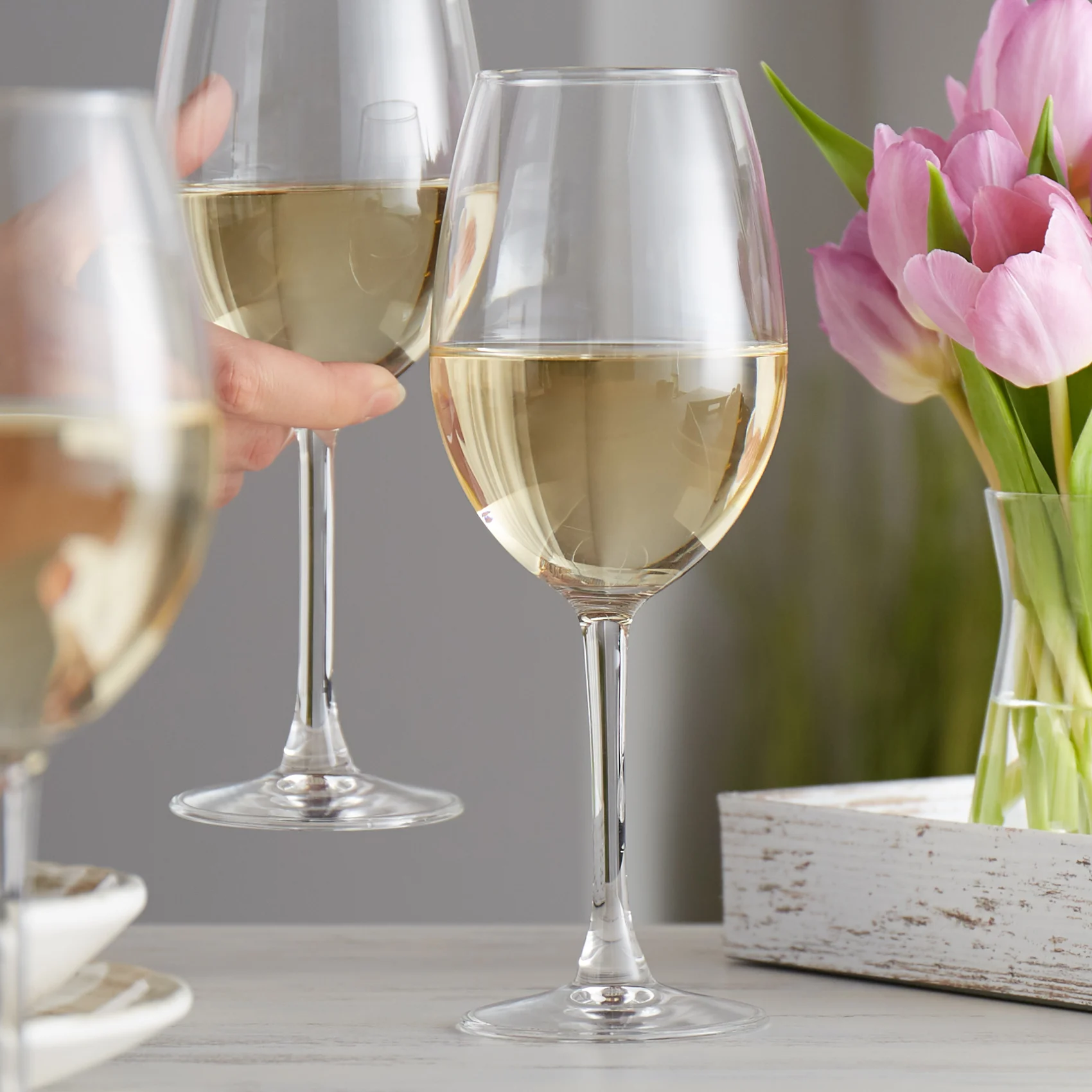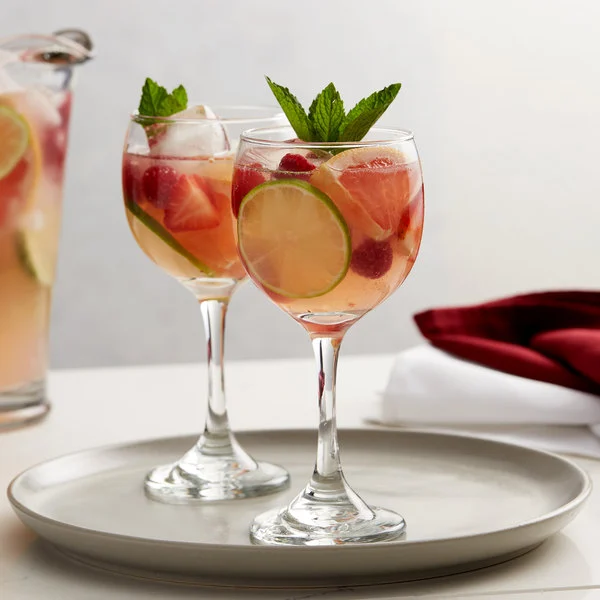Wine is so much more than just the beverage that a lot of people over 30 like to complain about! Wine enhances taste and can bring out more flavors in food. Speaking of taste, did you know one of the factors in how well you taste wine is actually…the type of wine glass you use?
Here’s a breakdown of different types of wine glass
Anatomy of a Wine Glass
A wine glass has four parts, the base, the stem, the bowl, and the rim. The base is what gives the glass its stability. From there, the stem elongates the glass while giving you something to hold on to without raising the temperature of the wine within. It also helps keep fingerprints from getting on your glass.
The bowl is the part of the glass that rests atop the stem. It’s arguably the most important feature of the glass. It should be large enough to swirl wine in without spilling or splashing, and it should be tapered to concentrate and retain the aroma of the wine. Full-bodied red wines need room to breathe and release their aroma, so they are served in larger bowls. Conversely, white wines are typically served in smaller glasses that are shaped like a “U” and narrower than a red wine glass, which helps maintain their cooler temperature. Flutes are often used to serve sparkling wines because they help the bubbles last longer.
The uppermost part of a wine glass is called the rim. A thinner rim is less distracting to drinkers as they sip their wine, and a smoothly rounded rim will not impede the wine as it flows from glass to mouth. Thicker, rounder rims are more attractive, but they may be more distracting to the drinker.
Red Wine Glass
A large bowl is ideal for red wines as it allows the full aroma to develop before you drink it. The size also allows for swirling so you can appreciate the complexity of the wine.
Anatomy
- Large glass with a full, round bowl and large opening
- Opening enables you to dip your nose inside to detect the aroma.
- Full bowl provides air contact for the complex aromas and flavors.
- Increases the oxidation rate, which smooths out the complex flavors
Examples of Red wine glasses
Burgundy Wine Glass
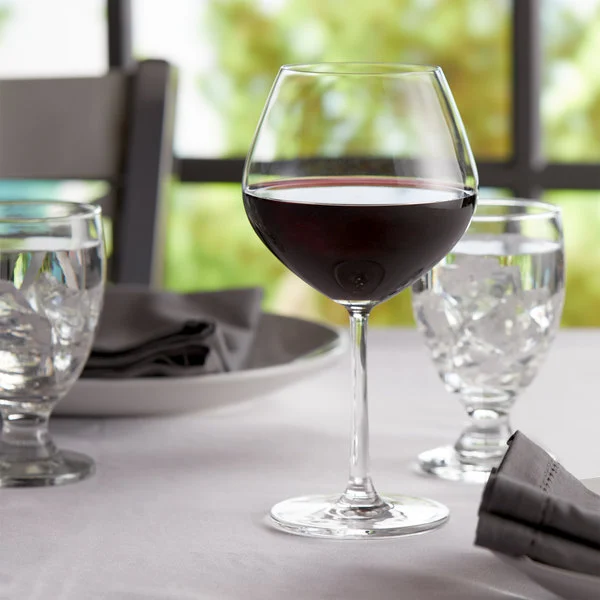
Type of wine: lighter, more delicate red wines, like Pinot Noir, Beaujolais, red Burgundy, and Dolcetto
Anatomy
- Large bowl (broader than Bordeaux glass) with narrower top directs wine to the tip of the tongue, allowing the drinker to detect flavor nuances
- Broad bowl allows aromas of delicate wines to accumulate
- Thin rim makes it easy to drink from
Pinot noir glass filled with pinot noir wine on an elegant table
Pinot Noir Glass
Type of wine: Pinot Noir and other light red wines
Anatomy
- Similar to Burgundy glass; easily interchangeable
- Wide bowl that enables the wine to come into contact with plenty of air, improving flavor and aroma
Bordeaux Glass
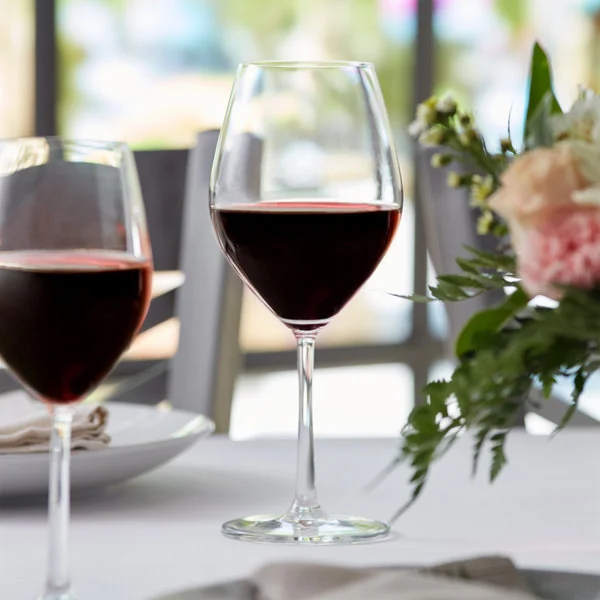
Type of wine: full-bodied, heavier red wines with high tannins, like Bordeaux blends, Petite Sirah, Cabernet Sauvignon, Cabernet Franc, and Malbec
Anatomy
- Tallest red wine glass; has a broad bowl, but not as broad as other red wine glasses
- Height of the glass creates distance between wine and mouth, which enables ethanol to dissipate on the nose, allowing more oxygen to soften tannins (tannins contribute to wine’s bitterness)
- Directs wine to the back of the mouth, minimizing bitterness and maximizing the flavor spectrum
A few red wines require special glass shapes to fully enjoy their aromas and flavors. For example, pinot noir pairs well with a glass with a slightly narrower bowl than a traditional red wine glass, with a rim designed to direct the liquid towards the back of your palate for an even distribution of flavors.
White Wine Glass
White wines are typically served with a slightly smaller bowl than red wines because they tend to need less aeration and do not require as much space for swirling.
Characteristics
- Bowl is more u-shaped and upright than a red wine glass
- Slightly smaller bowl than red wine glass
- The shape enhances and preserves aromas while also maintaining the wine’s cool temperature
Examples of white wine glass
Sauvignon Blanc Glass
Type of wine: Sauvignon Blanc and other light- to medium-bodied, fruity or floral wines, like white Bordeaux, Fume Blanc, Loire, Vinho Verde, Chenin Blanc, Muscadet, Muscat Blanc, and Pinot Grigio
Anatomy
- Tall glass with slender bowl, which captures the nuanced, delicate floral and fruit aromas and guides aroma straight to the nose
- Sides of the mouth detect acidity the most; this glass causes the tongue to form a U-shape, directing the wine down the front towards the center of the palate, causing a smoother sip.
Montrachet Glass
Type of wine: white wines with complex notes, such as Montrachet, White Burgundy, Corton-Charlemagne, Meursault.
- Large bowl allows the heavy complexities to interact with sufficient air and open up
- Large opening enables drinker to smell complex aromas and enables wine to flow from edges of tongue and either side of the palate to taste sour and acidic flavor spectrum.
Dessert Wine Glasses
Anatomy
- Usually smaller due to the high alcohol content of dessert wines
- Dessert glasses usually also direct wine to the back to the tip and back of the mouth to allow for adequate sweetness detection
Examples of a dessert wine glass
Port Wine Glass

Type of wine: Port or other dessert wines
Anatomy
- Narrow mouth reduces evaporation and concentrates the aromas
- Tall enough to allow sufficient swirling to release the aromas
- Designed to lead wine slowly down the center of mouth towards the back to enable just enough sweetness detection
Sherry Wine Glass
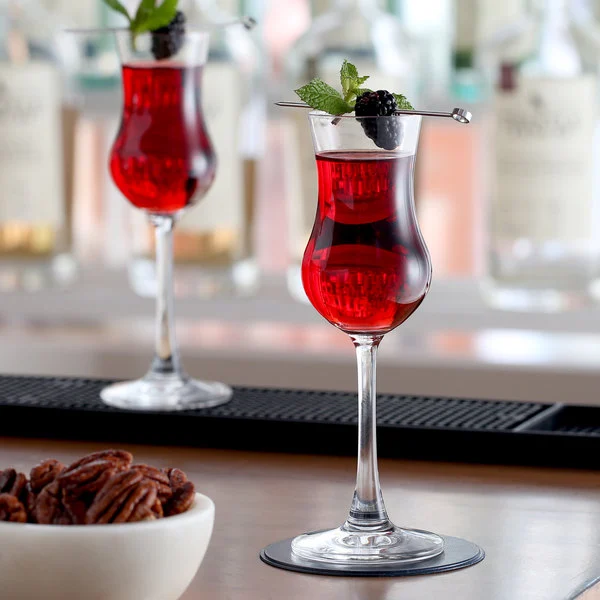
Type of wine: sherry, cordial, and other dessert wines
Anatomy
- Small size is ideal for dessert wines, which have a higher alcohol content
- Directs wine to the back of the mouth so the sweetness doesn’t overwhelm
Sparkling Wine and Champagne Glasses
Anatomy
- Upright, narrow bowl to preserve carbonation and flavor
- Flute wine glass filled with sparkling wine on an elegant table
Example of of champagne glasses includes:
Flute Wine Glass
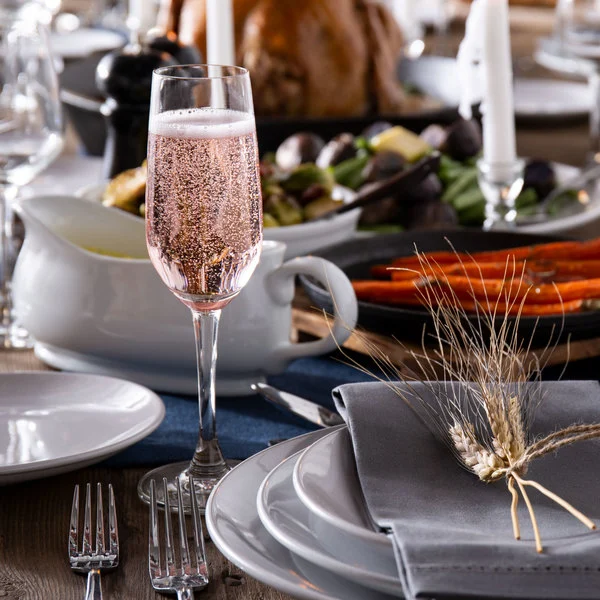
Type of wine: young sparkling wine or champagne, including Cava, Franciacorta, Prosecco, and Asti
Anatomy
- Short- to medium-length stem with long, narrow, upright bowl
- Bowl successfully retains the carbonation and captures the flavor
- Bead at the base prompts bubbles to gather and quickly rise
Tulip Wine Glass

Type of wine: young or mature champagne, such as Cava, Franciacorta, Prosecco, and Asti
Anatomy
- Slim base that slightly opens up to a wider bowl then narrows towards opening
- Bead at base makes bubbles rise, while the wideness allows room for flavor complexities to open up
- Narrower top prevents excess carbonation from escaping while directing aromas towards the tongue instead of up the nose
- Coupe wine glass filled with a fruity drink, garnished with a slice of fresh pineapple
Vintage and Coupe Glass

Type of wine: sweet champagne, Cava, Franciacorta, or Prosecco; is also used to serve cocktails
Anatomy
- Stemmed glass with short, yet broad and shallow bowl
- Reminiscent of the speakeasy era; originally used during the roaring ’20s to serve bubbly dessert champagne that was made with a heavy dosage of syrup
- Bowl enables wine to come in with plenty of air; less popular as a champagne or wine choice today because air exposure quickly dissipates bubbles and aromas
- Holds a small amount of liquid; ideal for themed events or cocktails


